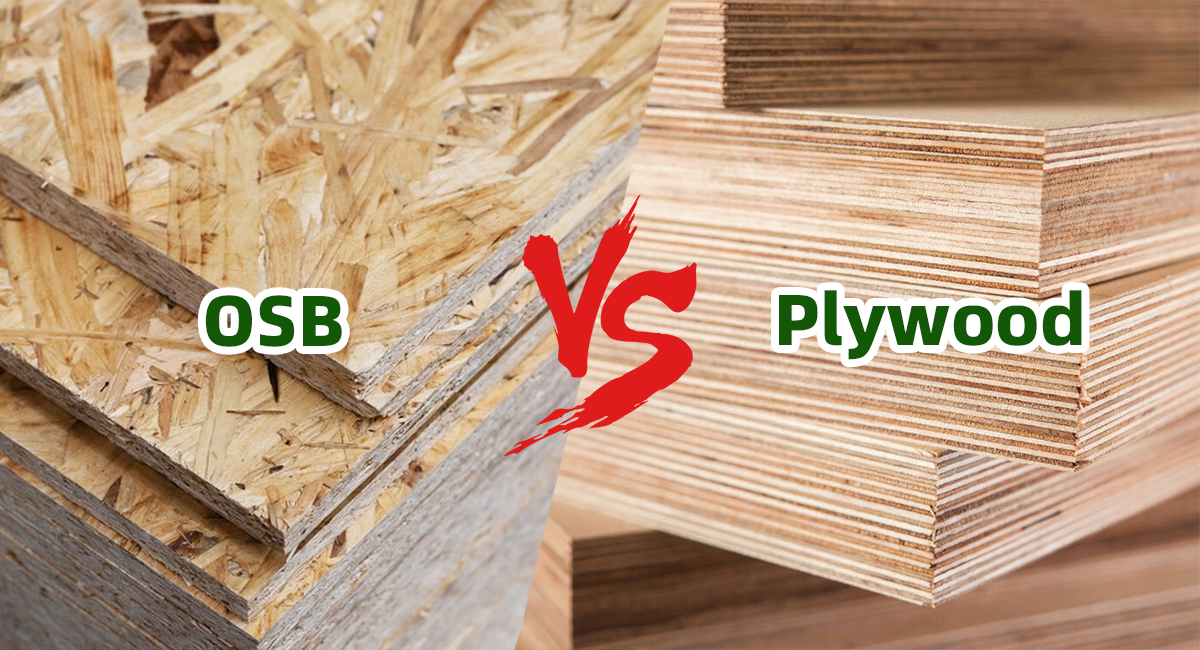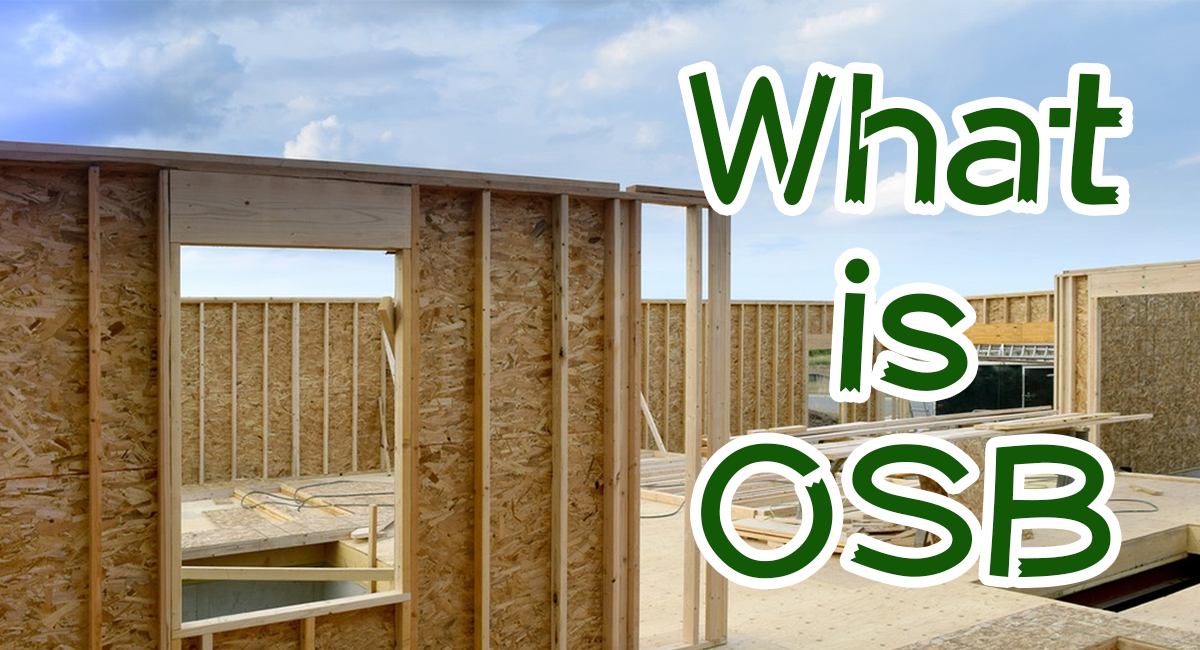Oriented Strand Board (OSB), often referred to as OSB board, is a versatile and increasingly popular building material in the construction and DIY sectors. This engineered wood product is created by meticulously compressing wood strands with adhesives, resulting in a robust and cost-effective alternative to traditional plywood. Its rising prominence can be attributed to its wide range of applications in both construction and do-it-yourself projects.
In recent years, OSB has gained significant traction in the construction industry. It is now used in approximately 70% of all floor, wall, and roof sheathing in North America. This surge in popularity can be attributed to its exceptional durability, cost-effectiveness, and suitability for a wide array of projects, from structural applications to furniture manufacturing. As we delve further into this article, we will explore the key features, uses, and advantages of OSB in greater detail, enabling you to make informed decisions when considering it for your next project.
What is OSB?
Definition and Origin of OSB:
Oriented Strand Board, commonly known as OSB, is an engineered wood product that has become a cornerstone in the construction and woodworking industries. OSB is distinguished by its composition of wood strands, which are strategically arranged and bonded together using adhesives. This innovative building material has evolved since its inception in 1963 to become a fundamental component in various applications.
Description of the Manufacturing Process:
The manufacturing process of OSB involves meticulous attention to detail. Small wood strands, typically sourced from sustainable and fast-growing trees like aspen poplar and southern yellow pine, serve as the primary raw material. These wood strands are strategically placed and layered in a manner that maximizes their strength. Adhesives, including synthetic resin and wax, are used to bond the strands, creating sheets of OSB that are characterized by their exceptional durability and load-bearing capabilities. Unlike traditional plywood, OSB is composed of larger, strategically positioned wood strands, providing it with added structural integrity.
Sustainability of OSB:
One of the key attributes that sets OSB apart is its sustainability. Unlike materials that require the use of older and more established trees, OSB is produced from smaller, rapidly regenerating trees. This environmentally responsible approach not only conserves mature forests but also ensures a more sustainable source of timber. The use of fast-growing trees makes OSB an eco-friendly choice, aligning with modern demands for sustainable building materials. As we delve deeper into this article, we will explore the diverse benefits and applications of OSB, allowing you to fully appreciate its role in contemporary construction and woodworking projects.

Key Features of OSB Boards
When considering Oriented Strand Board (OSB) for your construction or DIY projects, it's essential to understand its key features, which set it apart from traditional building materials. Here, we'll delve into the distinctive attributes that make OSB a popular choice:
1. Cost-Effectiveness:
One of the standout features of OSB is its exceptional cost-effectiveness. OSB boards are typically more budget-friendly compared to traditional plywood. This affordability makes OSB an attractive option for those seeking to complete projects within a reasonable budget, without compromising on quality or durability.
2. Environmental Friendliness:
OSB is hailed for its eco-friendly nature. Unlike materials that necessitate the use of mature trees, OSB is manufactured using small, quick-growing trees like aspen poplar and southern yellow pine. This sustainable approach helps conserve mature forests while promoting the responsible use of timber resources. By choosing OSB, you're making an environmentally conscious choice in your construction or woodworking endeavors.
3. Moisture Resistance and Exterior Use:
OSB exhibits notable resistance to moisture, making it versatile in various settings. While it can be used indoors and in dry conditions, OSB boards can be further enhanced for exterior applications. By treating OSB with moisture-resistant resins and waterproofing agents, it becomes a reliable option for projects in gardens, exterior walls, or other areas where exposure to the elements is a concern.
4. Strength and Load-Bearing Capabilities:
Another remarkable feature of OSB is its inherent strength. OSB boards are engineered to withstand significant loads, making them suitable for various load-bearing applications. Whether you're working on roof decking, wall sheathing, or flooring, OSB can provide the structural integrity needed to ensure your project's long-term durability.
5. Ease of Working and Versatility:
OSB's versatility and ease of use make it a preferred material for a broad range of applications. Its flexibility and strength allow it to be easily cut, shaped, and worked with various tools, catering to your specific project needs. Whether you're constructing furniture, crafting roofing components, or engaging in DIY projects, OSB can be adapted to your creative vision, offering an exceptional degree of flexibility.
Enhancing OSB for Outdoor Use
When considering the use of OSB (Oriented Strand Board) in outdoor projects, it's crucial to address weather protection to ensure its long-term durability. Here, we'll discuss the need for additional protection and provide a step-by-step guide on how to safeguard your OSB for permanent outdoor use:
1. Additional Weather Protection:
While OSB exhibits resistance to moisture, for prolonged outdoor exposure, it's advisable to provide additional weather protection. Without this protection, OSB can be susceptible to swelling and water absorption, potentially compromising its integrity over time.
2. Step-by-Step Guide for Water Protection:
Cutting and Sanding: Begin by cutting your OSB into the required pieces for your project. Afterward, lightly sand the OSB pieces to prepare the surface for treatment.
Painting or Staining: Apply a weather-proof exterior paint that is either oil or latex-based, or choose a wood stain for a natural finish. This step not only enhances the appearance but also adds an initial layer of protection against moisture.
Wood Waterproofing Sealant: Once the paint or stain is dry, apply a wood waterproofing sealant to all sides and cuts of the OSB. This sealant forms a barrier that prevents water from being absorbed through the exposed material.
Drying: Allow the sealant to dry for the specified duration, typically 12 to 14 hours on each side or as indicated on the product instructions.
Second Coat (if necessary): Depending on the sealant's instructions and your project's requirements, apply a second coat of the wood waterproofing sealant.
Final Drying: Allow the second coat to dry for the recommended duration to ensure thorough protection.
By following these steps, you can significantly enhance the water resistance of your OSB, making it well-suited for permanent outdoor use and helping it withstand the challenges posed by changing weather conditions.

OSB vs. Plywood
Understanding the differences between OSB and plywood is crucial when selecting the right material for your project. Here, we'll compare OSB and plywood, highlighting their distinctive characteristics and providing insights into the pros and cons of using OSB:
1. Material Differences:
The primary distinction between OSB and plywood lies in their composition. OSB is made up of strategically placed wood strands bonded with adhesives, while plywood consists of multiple thin layers of wood veneers.
2. Pros and Cons of OSB:
Cost-Effectiveness: OSB is generally more cost-effective than plywood, making it a budget-friendly option for various projects.
Availability: OSB is widely available in larger sheets compared to plywood, simplifying installation.
Environmental Friendliness: OSB is considered more environmentally friendly as it utilizes smaller, fast-growing trees, promoting sustainability.
Thickness and Weight: The thickness and weight of OSB, which can be perceived as either an advantage or a disadvantage, should be considered based on the specific project requirements.

Conclusion
In summary, Oriented Strand Board (OSB) stands as a testament to the ingenuity and versatility of modern construction materials. From its inception to its growing popularity in construction and DIY projects, OSB has established itself as a dependable and sustainable choice.
OSB's unique qualities, including cost-effectiveness, environmental friendliness, resistance to moisture, strength, and flexibility, make it a compelling option for a wide array of applications. Whether you're working on roofing, flooring, furniture, or tackling outdoor projects, OSB offers the strength and durability you need to bring your ideas to life.
Post time: Nov-04-2023








